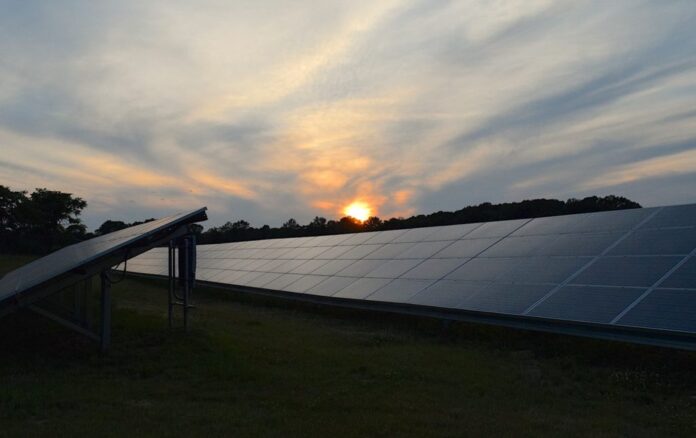Introduction
Solar energy has emerged as a pivotal player in the transition towards a sustainable future. As the world grapples with the challenges of climate change and the need for clean energy sources, advancements in solar panel technology have become crucial. These advancements have not only enhanced the efficiency and affordability of solar panels but have also expanded their applications, making solar energy a viable solution for meeting the growing demand for renewable energy. In this article, we will explore some of the remarkable advancements in solar panel technology and their significant impact on the renewable energy sector.
Improved Efficiency
One of the most significant advancements in solar panel technology is the improvement in efficiency. Traditionally, solar panels had low conversion rates, limiting their effectiveness in harnessing sunlight. However, recent developments have led to the creation of highly efficient solar panels that can convert a greater amount of sunlight into usable electricity.
One example of improved efficiency is the introduction of multi-junction solar cells. These cells consist of multiple layers of semiconductors that can capture a broader range of the solar spectrum. By utilizing different materials, each optimized for a specific portion of the solar spectrum, multi-junction cells achieve higher conversion efficiencies. This technology has been particularly beneficial for concentrated photovoltaic systems, enabling them to achieve conversion efficiencies above 40%.
Enhanced Durability and Lifespan
Solar panels have a long lifespan, typically lasting for 25 to 30 years. However, recent advancements have led to improved durability, making solar panels more resistant to environmental factors and extending their lifespan even further.
For instance, researchers have developed solar panels with self-cleaning capabilities. These panels incorporate a special coating that repels dust, dirt, and other debris, reducing the need for regular maintenance and improving energy output. Additionally, advancements in materials and manufacturing techniques have made solar panels more resistant to extreme weather conditions, such as hailstorms and hurricanes, ensuring their longevity in challenging environments.
Flexible and Lightweight Designs
Traditional solar panels are rigid and bulky, limiting their applications to rooftops and large solar farms. However, advancements in solar panel technology have paved the way for flexible and lightweight designs, opening up new possibilities for solar energy integration.
Thin-film solar panels are a prime example of this advancement. These panels utilize thin semiconductor layers deposited on various flexible substrates, such as plastic or metal foils. Thin-film solar panels are lightweight, highly versatile, and can be integrated into a wide range of surfaces, including curved structures, vehicles, and even clothing. This breakthrough has spurred the development of portable solar chargers, solar-powered wearable devices, and solar installations in unconventional locations.

Increased Affordability
Historically, the high cost of solar panels has been a barrier to their widespread adoption. However, advancements in manufacturing techniques and economies of scale have significantly reduced the cost of solar panel production, making solar energy more affordable than ever before.
One notable advancement is the development of printable solar cells. This emerging technology allows solar cells to be printed onto various surfaces using low-cost printing processes, such as screen printing or inkjet printing. Printable solar cells have the potential to revolutionize solar panel manufacturing, reducing production costs and enabling large-scale deployment of solar energy systems.
Integration of Energy Storage
Energy storage is a critical component for maximizing the benefits of solar energy. Advancements in solar panel technology have facilitated the integration of energy storage solutions, enabling the efficient utilization of solar power even during periods of low sunlight or high energy demand.
Batteries, such as lithium-ion batteries, have become increasingly affordable and efficient, making them an ideal companion for solar panels. These batteries store excess energy generated during daylight hours and discharge it when needed, ensuring a consistent power supply. Moreover, innovative technologies, such as flow batteries and advanced supercapacitors, are being explored to enhance energy storage capabilities further.
Impact on Renewable Energy
The advancements in solar panel technology have had a profound impact on the renewable energy sector. The increased efficiency, durability, and affordability of solar panels have made solar energy a more viable and attractive option for both residential and commercial applications. As a result, the global capacity of solar power installations has skyrocketed, contributing significantly to the growth of renewable energy generation.
Furthermore, the flexible and lightweight designs of solar panels have expanded the possibilities for solar energy integration. Solar-powered devices and installations can now be found in a diverse range of settings, from remote off-grid areas to urban landscapes. This increased accessibility has not only provided clean energy solutions but has also empowered communities and individuals to generate their electricity sustainably.
Conclusion
Advancements in solar panel technology have revolutionized the renewable energy landscape. The improved efficiency, enhanced durability, flexible designs, increased affordability, and integration of energy storage have propelled solar energy to the forefront of the clean energy revolution. As these advancements continue, solar power will play an increasingly crucial role in meeting the world’s energy needs while reducing carbon emissions. By harnessing the power of the sun, we can create a sustainable and greener future for generations to come.

